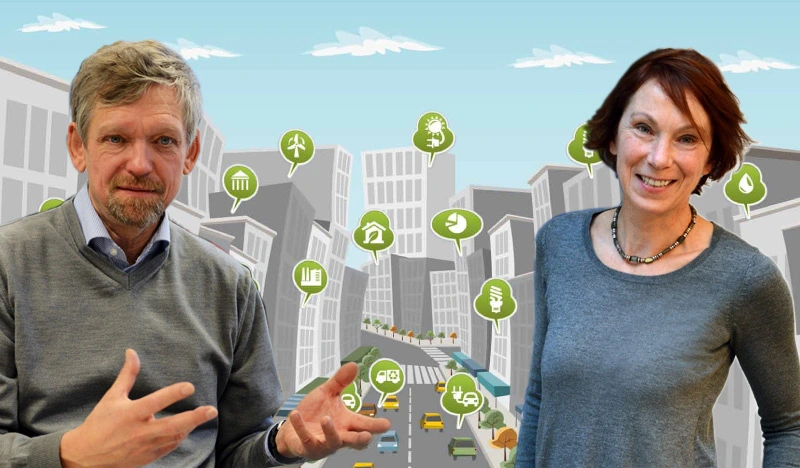The energy efficient city of tomorrow
Interview with the managers of the project “HighTech – LowEx”
The project “HighTech – LowEx: Energy efficient Berlin-Adlershof 2020” is the first comprehensive energy concept to be drawn up for a complex urban area used jointly by scientists, researchers, businesses, and residents. Adlershof is to become the benchmark in energy saving. How, we learn from Beate Mekiffer, WISTA Project Manager, and Joachim Sichter, Project Manager at the Berlin Senate Department for Urban Development and the Environment.
What is this project aiming to achieve?
Sichter: Our goal is to effect a significant reduction to the energy consumption of the whole area, despite expansions and changing circumstances. In doing so, we focus on primary energy savings, targeting by 2020 at least 30 percent compared with “business as usual”, i.e. a reference scenario.
Mekiffer: This goal is achieved by savings in the present building stock and the early creation of requirements for efficiency on the as yet undeveloped areas. Accordingly, we are drawing up cross media plans for the energy infrastructure with the target of setting up an efficient supply system there.
What measures are planned for the concept?
Mekiffer: The energy concept deals with the improvement of energy efficiency, the interlinking of buildings and facilities, the use of waste heat and regenerative energies, and the setup of an intelligent energy network. The measures include lighting concepts, building shell renovations, their air conditioning, improved control installations, and the intelligent networking of electricity, gas, and heat supplies.
Sichter: The greatest help is that we can expand the excellent local piped heat system in the area. In addition, there are energy consultants that advise companies on the possibilities and synergies. After all, it’s not clear to everybody what can be done.
What do you see to be so special about this project?
Mekiffer: Unique is the broad data basis for the energy concept of an entire location. In a fine analysis, engineers gathered data on the building density, the use of buildings and areas, and the energy infrastructure, supply, and needs in Adlershof. Taking these as their basis, they elaborated forecasts of the future consumption when capacities at the location are fully utilised. Together with the TU, they identified efficiency potential and technologies to tap into this.
Sichter: To date, there is no institution that develops an interdisciplinary energy concept beyond the walls of buildings for whole urban areas. And once our concept has been aligned to the future, we are not compelled to respond immediately. We can plan with innovation over the long term.
Who consumes the most energy – and how can specifically these needs be reduced?
Mekiffer: A number of technology and research institutes have very high energy needs for their processes and research. They cannot be reduced by any appreciable degree. These institutes can be optimised in terms of primary energy when they operate decentralized CHP stations that enhance the PE factor for electricity. With respect to final energy, overall optimisations can achieve savings on heating, lighting, and air conditioning.
Adlershof is pointing the way towards the energy efficient city of tomorrow – what will that mean for the institutes and companies at this location?
Sichter: It makes the high tech location as such a lot more appealing. A reliable, economic, and ecological energy supply not only saves costs, but makes us fit for the future and safeguards investments in new establishments.
How can other cities benefit from the project in future?
Mekiffer: With this supply concept, we also want to create planning instruments for other developed areas with a similar structure. It should be interesting above all for mixed use areas with research institutes, technology companies, production, and commercial enterprises. We are also pursuing scientific goals. The creation of energy concepts often ignores a number of options, for instance through lack of time. Specifically on these subjects, the association is to provide new findings and approaches. These subjects include innovative local supply options, efficient waste heat utilisation, cooling and air conditioning strategies, and energy hybrid systems like power to gas (P2G) or power to heat (P2H).
By Chris Löwer for Adlershof Special
